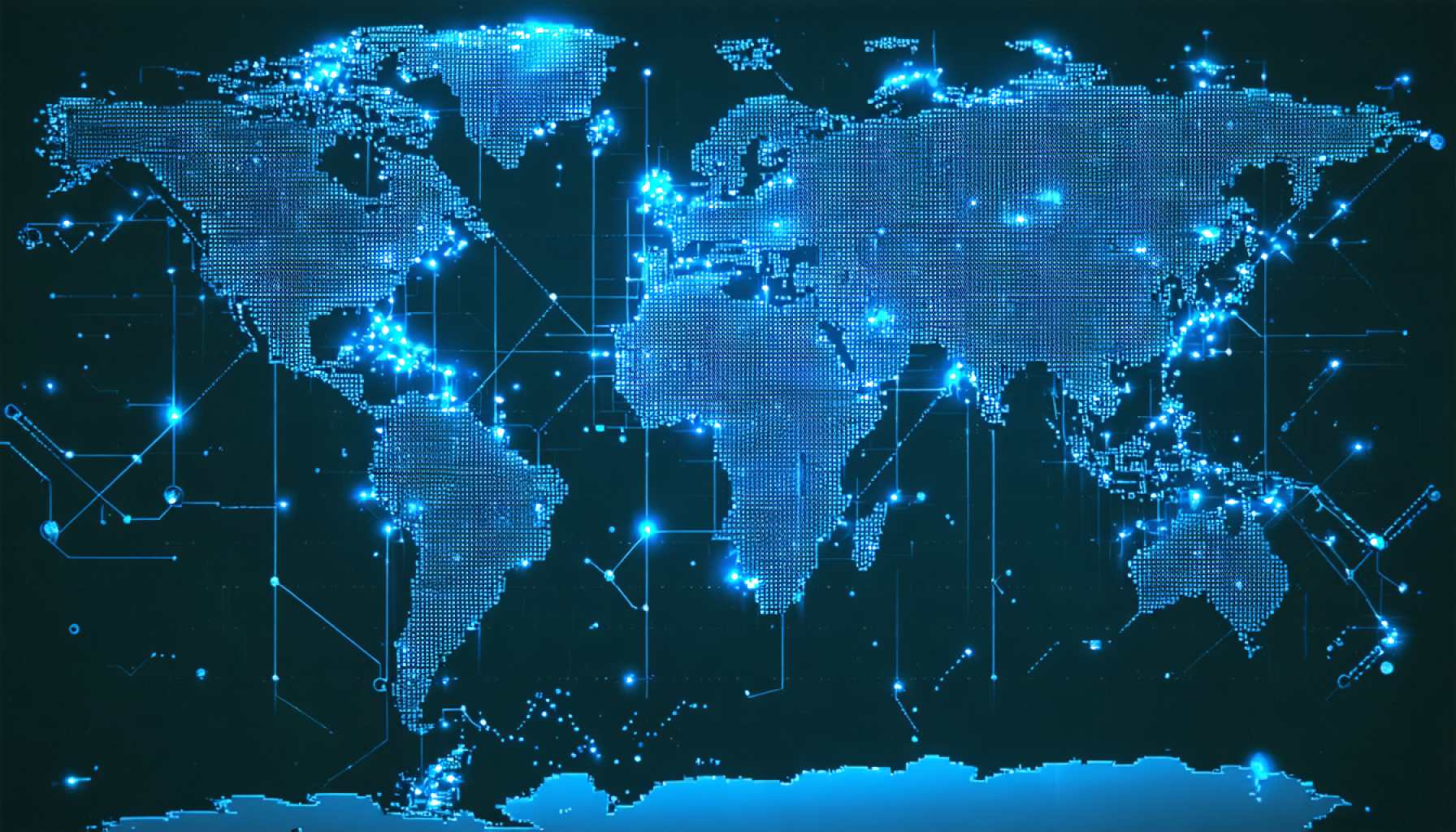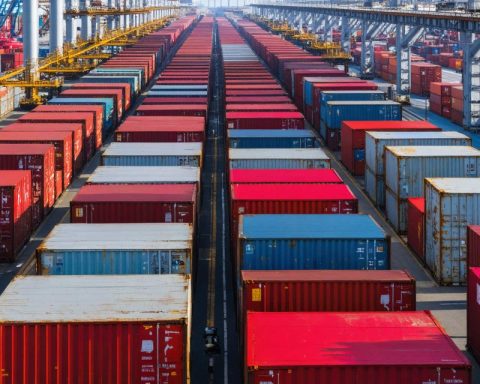- The global Battery Energy Storage System (BESS) market is rapidly expanding, crucial for stabilizing grids and storing renewable energy.
- China dominates with a significant capacity of 215.5 gigawatt-hours (GWh) and plans to expand to 505.6 GWh.
- The United States follows with 82.1 GWh capacity, projecting growth to 244.6 GWh.
- Australia is poised for major growth, targeting an increase from 5.6 GWh to 102.9 GWh by 2027.
- European countries like the UK and Germany are steadily expanding their BESS capabilities.
- Emerging markets, such as Chile and Saudi Arabia, are planning significant increases in storage capacity.
- Canada is expected to showcase rapid growth, increasing from 0.3 GWh to 18.3 GWh by 2027.
- Challenges remain with grid integration and infrastructure development, essential for achieving performance goals.
- Innovative solutions are vital for stakeholders to navigate infrastructure and capacity hurdles effectively.
- The expanding BESS market promises a sustainable energy future, emphasizing the importance of power efficiency.
The era of battery energy is upon us, with the world charging forward into a new age of power storage that promises to redefine how we harness and utilize energy. The globe’s appetite for electricity storage is rapidly expanding, with the Battery Energy Storage System (BESS) sector setting the pace as the fastest-growing segment of the global battery landscape. These systems are pivotal in stabilizing grids, storing renewable energy, and providing much-needed backup power.
As the world navigates a complex energy transition, China’s dominance in the BESS market looms large. Nearly two-thirds of the global capacity belongs to this giant with an installed capacity of 215.5 gigawatt-hours (GWh) and a staggering expansion plan of 505.6 GWh. The red dragon is not alone in this ambitious race; the United States trails with 82.1 GWh of installed capacity and a projected boost to 244.6 GWh. These figures reflect a broader global shift towards greener energy solutions.
Behind the US and China, Australia is poised for a significant leap with its anticipated capacity skyrocketing from 5.6 GWh to a remarkable 102.9 GWh by 2027. This surge underscores Australia’s strategy to firm up its renewable energy assets with robust storage solutions.
Europe, not to be left behind in the sustainable sweepstakes, presents a diverse BESS market characterized by modest yet determined growth. The United Kingdom leads the pack at 7.5 GWh installed, with a strategic forecast of increasing to 56.3 GWh by 2027. Italy, Germany, and France add their weight to Europe’s combined push, albeit on a less grandiose scale.
Meanwhile, in the Global South, nations like Chile and Saudi Arabia are rolling out strategies to bulk up their energy infrastructure. Each holds ambitious plans to shift from fledgling storage figures to outputs that reflect modern energy paradigms—Chile aims for a boost to 41.0 GWh and Saudi Arabia a significant rise to 32.4 GWh.
Canada emerges as a dark horse, with projections suggesting the swiftest pace of growth. From a humble 0.3 GWh today, it is set to surge to an eye-catching 18.3 GWh by 2027. This trajectory paints a picture of a nation investing heavily in its energy future.
Yet, even as the world races ahead, challenges persist. Grid connection issues and the development hurdles in emerging markets remind us that building capacity isn’t just about quantity but usability and integration. Countries will need to navigate these obstacles to ensure that their battery storage resolutions do not only fill MW quotas but also integrate smoothly into existing infrastructures.
The takeaway for stakeholders is clear: as the global BESS market expands, there’s a pressing need for innovative solutions to overcome infrastructure bottlenecks. The prospects are bright for those that can adapt to the evolving landscape, creating seamless solutions that cater to the world’s growing energy needs. The battery boom isn’t merely about electricity; it’s about empowering a sustainable future.
Powering the Future: The Rise and Realities of Battery Energy Storage Systems
Understanding the Battery Energy Storage System (BESS) Revolution
The burgeoning demand for renewable energy sources has significantly propelled the Battery Energy Storage System (BESS) market into the spotlight. As nations look to stabilize their power grids, enhance renewable energy usage, and ensure reliable electricity supply, BESS stands as a cornerstone technology in this energy transition.
How-To Steps & Life Hacks: Integrating BESS into Local Grids
1. Assessment & Planning: Conduct a grid impact assessment to understand the specific needs and limitations of the local grid.
2. Selecting the Right Technology: Choose between different battery technologies—such as lithium-ion, flow batteries, and sodium-sulfur—depending on cost, storage duration, and performance.
3. Installation & Commissioning: Engage a skilled team to manage the physical installation and ensure compliance with regional regulations.
4. Integration & Testing: Seamlessly integrate BESS into existing grid infrastructure, followed by rigorous testing phases.
5. Monitoring & Maintenance: Implement real-time monitoring systems for optimal performance and regular maintenance schedules.
Real-World Use Cases
– California’s Renewable Push: As part of its environmental goals, California uses BESS to store excess solar power generated during the day, releasing it during peak evening hours.
– Remote Microgrids: In isolated areas, such as islands, BESS enables microgrids to operate efficiently by balancing intermittent renewable energy sources like wind and solar.
Market Forecasts & Industry Trends
– Global Growth Trajectory: The global BESS market is expected to grow at a compound annual growth rate (CAGR) of over 20% through 2027, driven by renewable integration demands.
– Technological Advancements: Innovations such as solid-state batteries and hybrid storage systems are poised to improve energy density and safety.
Controversies & Limitations
– Environmental Concerns: The extraction of lithium and other metals essential for battery production raises ecological and ethical issues.
– Grid Connection Barriers: In many emerging markets, inadequate infrastructure poses significant challenges to integrating BESS.
Pros & Cons Overview
Pros
– Improved grid stability and resilience
– Efficient renewable energy utilization
– Reduction in reliance on fossil fuels
Cons
– High initial investment costs
– Environmental impact of battery production
– Technical integration challenges
Actionable Recommendations
– Stakeholders & Policymakers: Promote policies that incentivize research in sustainable battery technologies and facilitate easier grid integration.
– Investors: Focus on emerging markets showing rapid development in BESS infrastructure, particularly countries like Canada and Australia with aggressive expansion plans.
– Community Leaders: Educate and involve local communities in BESS projects to ensure grassroots support and understanding.
Sustainability Insights
– Circular Economy: Encourage the development of recycling technologies for battery components to reduce waste and environmental impact.
– Second-Life Applications: Explore opportunities for repurposing used batteries in less-demanding applications, extending their life cycle.
As the world shifts towards cleaner energy solutions, being informed and prepared is essential. By harnessing the power of BESS, we can pave the way for a sustainable and balanced energy future.
For more insights into sustainable energy technologies, visit Energy.gov.














